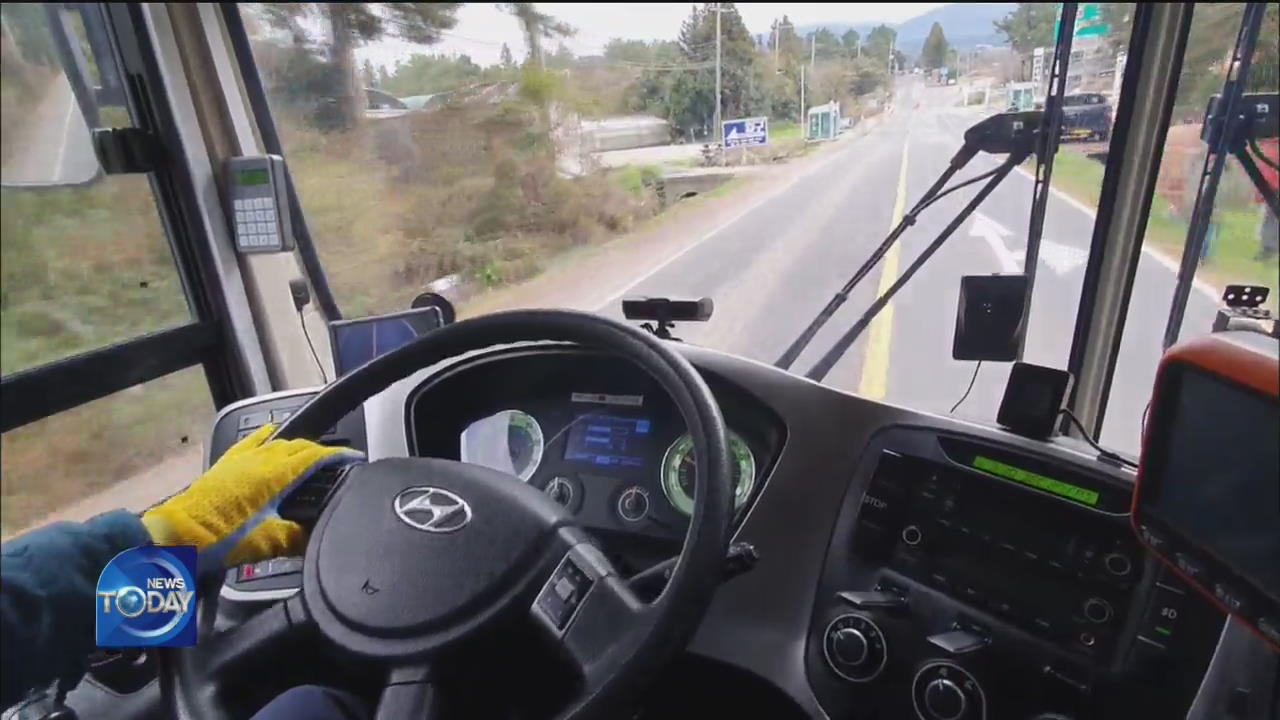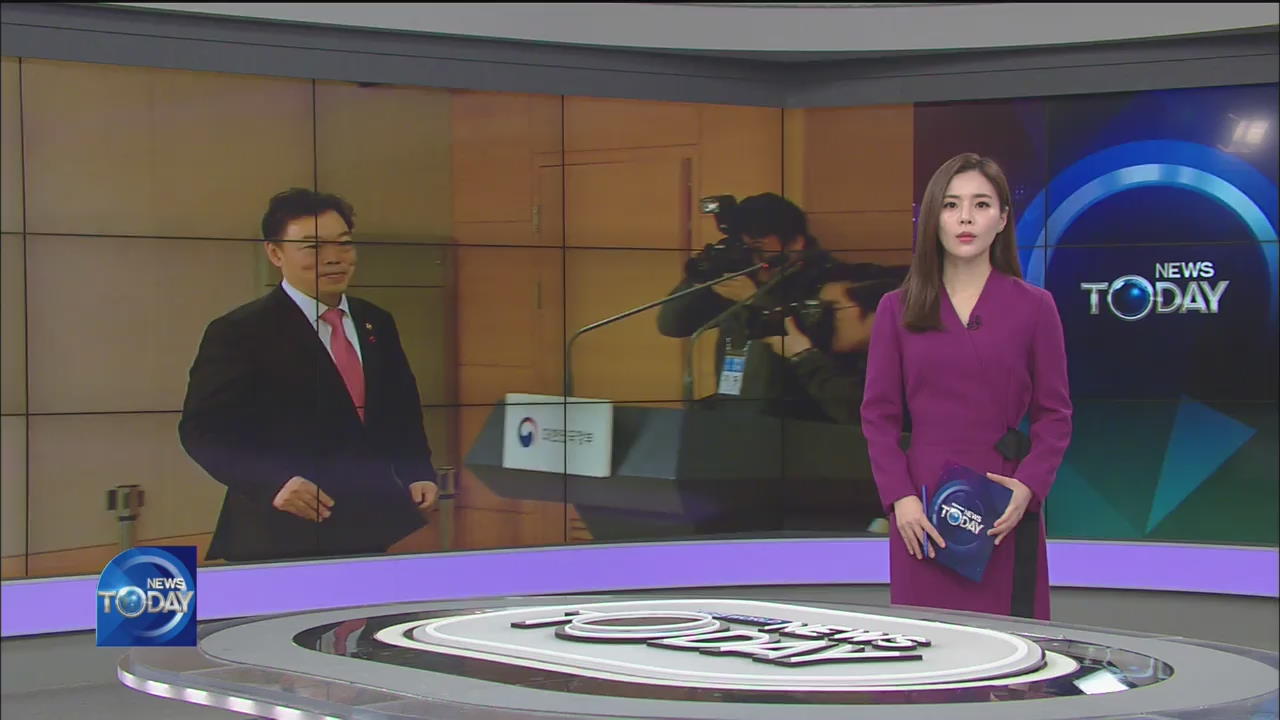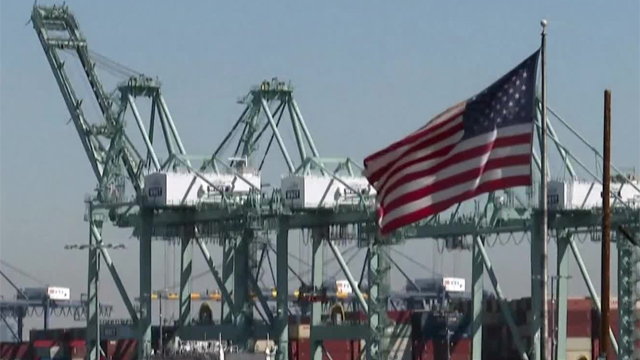SMART DEVICE PREVENTING BUS ACCIDENTS
입력 2019.12.30 (15:06)
수정 2019.12.30 (16:44)
읽어주기 기능은 크롬기반의
브라우저에서만 사용하실 수 있습니다.
[Anchor Lead]
For the first time in Korea, Jeju-do Island has developed a comprehensive service that uses smart devices to prevent public buses from causing accidents and even conduct emergency rescue operations. There is a move to expand the service across the nation.
[Pkg]
As a bus veers off its lane, a warning sound is switched on from a smart device installed in front of the steering wheel.
[Soundbite] "Driver, switch on the turn signal light and change your lane."
The device now encourages the drowsy driver to stretch and refresh himself.
[Soundbite] "Driver, you must be tired. Stretch yourself."
An automatic braking system comes into action to bring the bus to a stop as it was about to collide with a car ahead. These unusual moves by the bus are immediately reported to a traffic information center, then the police call the emergency contact number 119.
[Soundbite] "A collision has occurred. Please dispatch an emergency vehicle and conduct a rescue operation."
IOT technology can help public buses avoid accidents and contact emergency rescue services in real time. Until now, only information on drowsy driving and cars veering off lane were collected. Jeju-do has developed the nation's first algorithm that uses the information to determine the danger levels of the situations.
[Soundbite] KIM KI-HONG(JEJU PROVINCIAL GOV'T) : "It will be used as a national standard and a model for other local governments. In Jeju, it will be installed in rented cars and taxis to make the island safer."
The resort island has applied for a patent for the technology and will install the system in all its public buses by 2022. There are also plans to expand the system across the nation.
For the first time in Korea, Jeju-do Island has developed a comprehensive service that uses smart devices to prevent public buses from causing accidents and even conduct emergency rescue operations. There is a move to expand the service across the nation.
[Pkg]
As a bus veers off its lane, a warning sound is switched on from a smart device installed in front of the steering wheel.
[Soundbite] "Driver, switch on the turn signal light and change your lane."
The device now encourages the drowsy driver to stretch and refresh himself.
[Soundbite] "Driver, you must be tired. Stretch yourself."
An automatic braking system comes into action to bring the bus to a stop as it was about to collide with a car ahead. These unusual moves by the bus are immediately reported to a traffic information center, then the police call the emergency contact number 119.
[Soundbite] "A collision has occurred. Please dispatch an emergency vehicle and conduct a rescue operation."
IOT technology can help public buses avoid accidents and contact emergency rescue services in real time. Until now, only information on drowsy driving and cars veering off lane were collected. Jeju-do has developed the nation's first algorithm that uses the information to determine the danger levels of the situations.
[Soundbite] KIM KI-HONG(JEJU PROVINCIAL GOV'T) : "It will be used as a national standard and a model for other local governments. In Jeju, it will be installed in rented cars and taxis to make the island safer."
The resort island has applied for a patent for the technology and will install the system in all its public buses by 2022. There are also plans to expand the system across the nation.
■ 제보하기
▷ 카카오톡 : 'KBS제보' 검색, 채널 추가
▷ 전화 : 02-781-1234, 4444
▷ 이메일 : kbs1234@kbs.co.kr
▷ 유튜브, 네이버, 카카오에서도 KBS뉴스를 구독해주세요!
- SMART DEVICE PREVENTING BUS ACCIDENTS
-
- 입력 2019-12-30 15:06:24
- 수정2019-12-30 16:44:43

[Anchor Lead]
For the first time in Korea, Jeju-do Island has developed a comprehensive service that uses smart devices to prevent public buses from causing accidents and even conduct emergency rescue operations. There is a move to expand the service across the nation.
[Pkg]
As a bus veers off its lane, a warning sound is switched on from a smart device installed in front of the steering wheel.
[Soundbite] "Driver, switch on the turn signal light and change your lane."
The device now encourages the drowsy driver to stretch and refresh himself.
[Soundbite] "Driver, you must be tired. Stretch yourself."
An automatic braking system comes into action to bring the bus to a stop as it was about to collide with a car ahead. These unusual moves by the bus are immediately reported to a traffic information center, then the police call the emergency contact number 119.
[Soundbite] "A collision has occurred. Please dispatch an emergency vehicle and conduct a rescue operation."
IOT technology can help public buses avoid accidents and contact emergency rescue services in real time. Until now, only information on drowsy driving and cars veering off lane were collected. Jeju-do has developed the nation's first algorithm that uses the information to determine the danger levels of the situations.
[Soundbite] KIM KI-HONG(JEJU PROVINCIAL GOV'T) : "It will be used as a national standard and a model for other local governments. In Jeju, it will be installed in rented cars and taxis to make the island safer."
The resort island has applied for a patent for the technology and will install the system in all its public buses by 2022. There are also plans to expand the system across the nation.
For the first time in Korea, Jeju-do Island has developed a comprehensive service that uses smart devices to prevent public buses from causing accidents and even conduct emergency rescue operations. There is a move to expand the service across the nation.
[Pkg]
As a bus veers off its lane, a warning sound is switched on from a smart device installed in front of the steering wheel.
[Soundbite] "Driver, switch on the turn signal light and change your lane."
The device now encourages the drowsy driver to stretch and refresh himself.
[Soundbite] "Driver, you must be tired. Stretch yourself."
An automatic braking system comes into action to bring the bus to a stop as it was about to collide with a car ahead. These unusual moves by the bus are immediately reported to a traffic information center, then the police call the emergency contact number 119.
[Soundbite] "A collision has occurred. Please dispatch an emergency vehicle and conduct a rescue operation."
IOT technology can help public buses avoid accidents and contact emergency rescue services in real time. Until now, only information on drowsy driving and cars veering off lane were collected. Jeju-do has developed the nation's first algorithm that uses the information to determine the danger levels of the situations.
[Soundbite] KIM KI-HONG(JEJU PROVINCIAL GOV'T) : "It will be used as a national standard and a model for other local governments. In Jeju, it will be installed in rented cars and taxis to make the island safer."
The resort island has applied for a patent for the technology and will install the system in all its public buses by 2022. There are also plans to expand the system across the nation.
이 기사가 좋으셨다면
-
좋아요
0
-
응원해요
0
-
후속 원해요
0












![[속보] 윤 전 대통령 내란특검 2차 조사 불출석…<br>첫 ‘소환 불응’](/data/layer/904/2025/07/20250701_agOL94.jpg)




이 기사에 대한 의견을 남겨주세요.